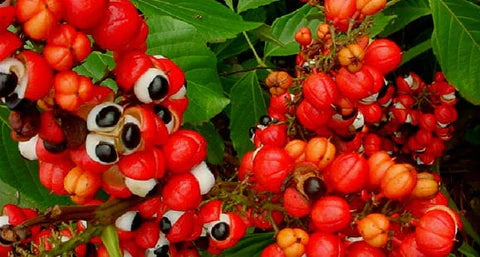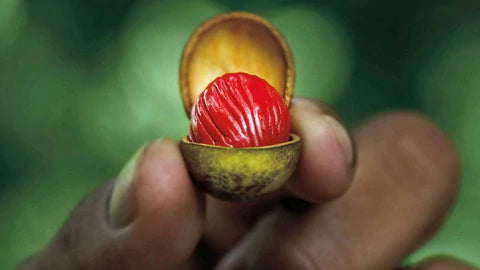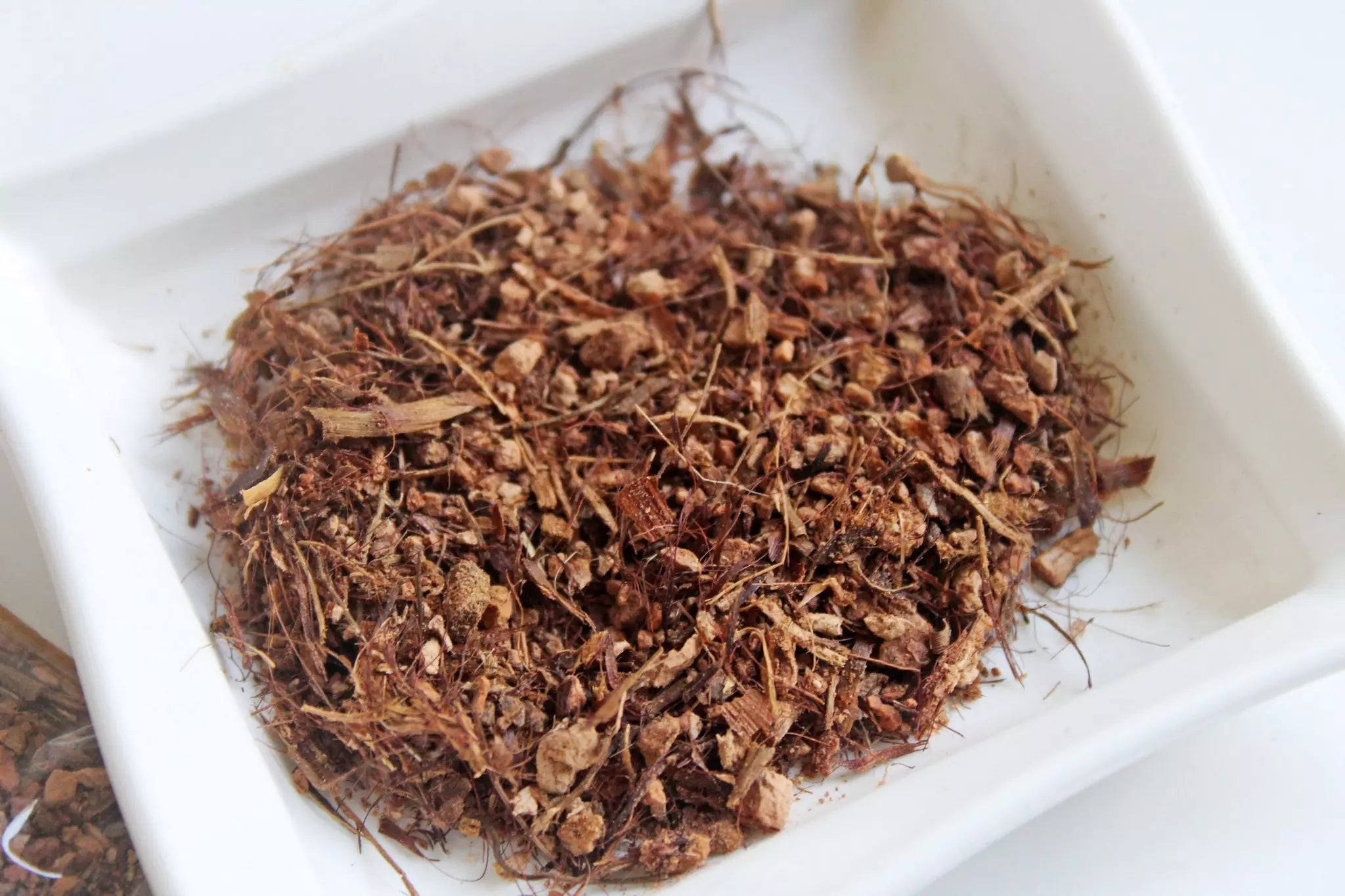
Guarana, the eyes of the Forest

For the Indigenous Peoples living in the dense forests between the RioTapajós and the Rio Madeira in Brazil, the seeds of the plant known as guaraná are the cornerstone of their culture. For centuries, tribes like the Sateré Mawé and the Guarani have selectively bred and carefully cultivated Paullinia cupania to produce the most potent seeds. In the local language “guaraná” translates as “the beginning of all knowledge.”
The seeds are most commonly used in the form of a drink, but also as an ingredient in bread. The guaraná drink prepared by the tribes is renowned for its healing and energy-boosting properties. The seeds contain as much as five times the caffeine of coffee. Its other chemical properties are used by Indigenous Peoples to treat a host of
conditions, from migraine to dysentery to arteriosclerosis. It is those same qualities that have propelled the varying forms of guaraná onto the international market. The guaraná plant is now in high demand throughout the world by beverage makers as well as proponents of herbal remedies. The soaring demand for guaraná has endangered the centuries-old traditions of these Amazonian tribes, for whom the plant
is an integral part of their culture.
According to Mawé tradition, their physical existence can be attributed to the guaraná plant. In their origin story, a child was murdered and laid to rest, and the guaraná plant grew from the child’s eye. The guaraná plant itself bore a child, from whom the Mawés descended. (The fruit does bear a striking resemblance to a human eye.)
The outer skin is a reddish-orange, and when it begins to open it reveals a white ball that contains the dark black seed at its center.
Perhaps most commonly ingested in the form of a drink known as çapó, the seed is first roasted and then ground down into a powder and mixed with manioc. The result of this guaraná-powder-and-manioc mixture is a paste that is formed into sticks and allowed to harden. Once solidified, it is grated with the hard, rough tongue of the piracuru fish and dissolved in water.
Çapó is a stimulant that hunters prepare to give them energy before heading out for the hunt. It is also central to rituals. In particular, it plays a key role in the Festa da Tocandira. This festival, lasting up to 20 days, is a rite of passage in which Mawé boys are initiated into manhood, with the final challenge requiring them to put their hands into decorated straw gloves filled with biting ants. Throughout the festival various stories relating to love, war, and life, in general, are chanted, while the participants pass around a large gourd filled with çapó.
In addition to çapó, guaraná is used in a bread prepared by the Indigenous groups of the region. The initial stages of making the bread are similar to those used in making çapó. The seed is first removed from the fruit, roasted, ground, and eventually added to a mixture that is then baked in terracotta ovens. The bread is then smoked and grated with a basalt stone when ready to eat.
Today, guaraná is gaining tremendous popularity throughout the world. Perhaps the most popular product is the number-one soft-drink in Brazil, Guaraná Antarctica, which has been commercially produced since 1921. In the United States and Europe, guaraná can be easily bought in any number of pill forms as a dietary supplement and energy booster. As demand for energy drinks has grown throughout the world so, too, has the demand for guaraná, a key ingredient. Aside from these popular uses, guaraná has also been found to have medicinal value. In the United States, a patent has been taken out on a method of preparing the seed extract that has been shown to inhibit platelet aggregation in the blood.
Unfortunately, because of this growth in global demand for guaraná multinational companies have begun to put a significant amount of pressure on the guaraná producers. Central to the struggle for guaraná are Ambev, current producers of Guaraná Antarctica, and Coca-Cola, which has tried to work its way into the market with the product Guaraná Kuat.
The purest forms of guaraná, guaraná das terras, developed by the Mawés over centuries, has the best taste and greatest potency, but it cannot compete with the yield of genetically altered plants that are grown on plantations. The competition from commercial growers, whose plants can produce 30 times as many seeds as the native version, has put economic pressure on the Mawé, who have always traded the seeds and used it as the basis of their economy.
Fortunately, the dangers presented by the mass cultivation of the guaraná plant have not gone unnoticed. Numerous international organizations, as well as the Brazilian government, have moved to ensure that the traditional practices of guaraná cultivation by the Mawé and Guarani are protected. The Fundação Nacional do Índio (FUNAI) has set up a number of cooperatives in the guaraná-producing regions of the Amazon to protect and improve the local production of guaraná.
Additionally, the Slow Food Foundation for Biodiversity has recognized the guaraná plant as being endangered and has worked towards preserving the traditional methods of production and protecting the guaraná das terras.
The importance of the guaraná plant can perhaps best be summarized by one of the first westerners to ever see the plant. Father Joao Felipe Betendorf, a Jesuit missionary from Luxembourg, spoke of the significance of guaraná to the Indigenous population when he first encountered it in 1669: “The Andirazes have in their woods a small fruit they call guaraná . . . and which they praise like whites praise their gold.”
Try Our Amazonian Scrub Bar




Leave a comment
This site is protected by hCaptcha and the hCaptcha Privacy Policy and Terms of Service apply.